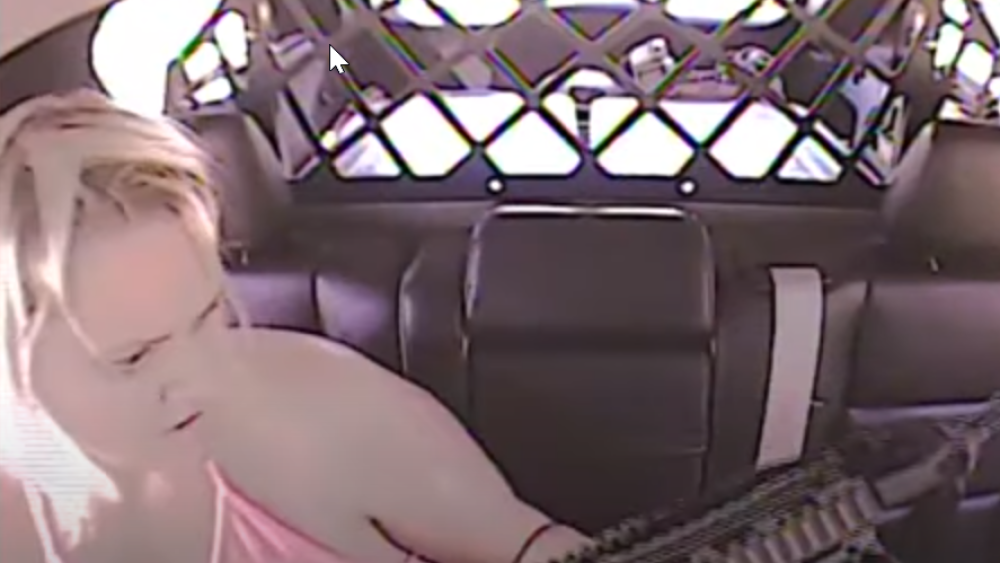If you follow the news, you probably saw coverage of an incident in which a prisoner was able to slip her cuffs, access a patrol rifle and shoot a deputy and bystander. Thankfully, their injuries were relatively minor and the suspect eventually surrendered without any loss of life.
Before I get too far into this discussion, I’d like to state that nothing I write here is an indictment of any law enforcement officer or agency. There isn’t a cop out there who hasn’t done something or failed to do something where a situation could have ended poorly; especially with an exacerbating equipment failure as I suspect occurred in this case. Fortunately, most of us have been lucky. It is, however, imperative we learn from every incident in which there has been – or could have been – a bad outcome.
I think the remedy to a situation like this involves three approaches in no particular order:
- Physical security.
- Handcuffing technique and equipment.
- Maintaining visual contact with your suspect.
Physical security
First and foremost, the cage insert in a patrol vehicle must not allow access to the front seat from the back.
My department has two different cage systems. I placed myself in the back seat and attempted to gain access to the release button. I was unable to do so even with freakishly long arms. On the newer style, the window is only about 4” by 10” and almost to the roof line. The older style has a window that is approximately 12” x 12” but it is covered with bars.
I would recommend this experiment to every cop out there. If you can access a firearm from the back seat, so can your prisoner.
Additionally, consider where the release button is in your vehicle and how it is labeled. If it’s visible on the console, it probably shouldn’t have the word “gun” or a picture of a gun on it. Unfortunately, after some research, it appears this is more common than not. I’m thinking a piece of white electrical tape might be sufficient to solve this problem.
Handcuffs and handcuffing
I have no doubt the officers, in this case, handcuffed this suspect properly. However, let’s review the proper technique just in case.
Handcuffs should be tight. If you can put more than one finger between your prisoner’s wrist and the cuff, they’re not tight enough. That’s for everyone’s safety and comfort. Cuffs applied too loosely allow the wrists to turn inside the cuffs and are more likely to cause bruising.
But what if your handcuffs are too big or even too small for your arrestee? That happens, occasionally. There’s another lesson I learned the hard way. After that, I bought a pair of Smith & Wesson #1 universal handcuffs. They’re only slightly more expensive than the standard pair and allow for handcuffing much larger and much smaller individuals. This small investment might be worthwhile.
Visual contact
I also learned the hard way that an uncooperative prisoner can find their way out of handcuffs and out of the back of a patrol car if there’s any wiggle room at all. It’s quite impressive what someone can do with average strength, limberness and/or diminutive size. Even when we have good physical security and good handcuffing, we still need to assign someone to maintain visual contact with the prisoner. Of course, this is easier said than done depending on staffing, etc.
A side note
To add to this topic, remember that vehicle-mounted weapon racks are intended for temporary use. They can be defeated with the simplest of tools and a little time. Never leave your long guns or any other guns in your take-home car or in your department’s parking lot. Seemingly, every month, we get a teletype to be on the lookout for items stolen from a police cruiser. Much like the Hippocratic Oath, the first rule of law enforcement should be, “Don’t make things worse.” Burglaries to police vehicles have happened regularly since before I was on the job and burglars are more emboldened than ever.
Be safe
Again, I’m not throwing rocks at other cops. Such an incident could happen to all of us. Still, anyone in our custody is our responsibility. If a member of the public or even the prisoner is hurt during or because of an escape, we will at the very least be heavily scrutinized. We could pay an even higher price, of course. I hope these tips help other cops make sure such as incident never happens again.
NEXT: Why you need to be a control freak during prisoner transport



